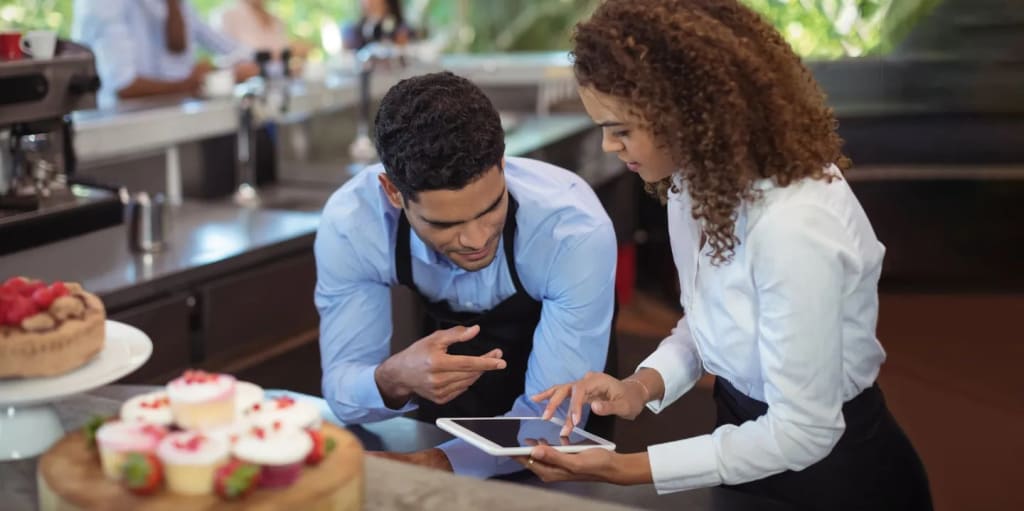Introduction
The absolute foundation of succeeding in a restaurant is the example of exceptional service. Educating staff in providing memorable experiences will not only lead to customer satisfaction but also help create long-lasting customers. This article covers the best ways to train your restaurant staff on delivering great service.
Understanding the Importance of Training
Training is critical for teaching staff to literally over and above the call of duty(I know, I get a little carried away at times) Confident and empowered well-trained employees leads to better morale and higher productivity. It is essential to consistency in service, that means a nice and good name of the business.
Creating a Comprehensive Training Program
The first step is to create a structured training program. This initiative must touch a few basics like; familiarizing with the menu, how to treat your customer, understand safety protocols. A defined set of learning outcomes and agreed target helps to act as a skeleton in which levels of training can be organised.
Menu Mastery
All of the staff must be very well informed about what is on the menu. This knowledge ranges from ingredients, to how each dish is prepared, and that includes potential allergens. If you want your staff to recommend food, let them try it. We keep our staff current with regular menu updates and tastings so they can know the new offers.
Customer Service Skills
You need to have a very customer service oriented mindset and approach Training will concentrate on Communication, Active Listening, Problem Solving The role plays is scenarios are set up to assist staff in handling anything from greeting guests to addressing complaints. The focus on empathy and patience allows staff to relate to many different types of customers.
Emphasizing Cleanliness and Safety
In the restaurant business cleanliness and safety are number one. Education in various areas, from hygiene and handling to first aid Revisiting safety standards on a regular basis will help keep you in compliance and further protect customers and employees alike.
Utilizing Technology
Technology can enhance training efficiency. With online modules, training apps and digital resources provide flexibility and accessibility. Engages staff and self-paced learning with interactive platforms. Utilize tech in training programs to help employees access information at all times.
Mentorship and Shadowing
Pairing each new hire with an experienced staff member for some time ensures many soft skills are understood by everyone. Newcomers can watch shadowing and see what’s best, how it’s done and so forth. Our hands-on method of training is designed to expedite knowledge retention and team building, which also provides an environment for our new employees that is conducive to success.
Continuous Feedback and Assessment
Staff have the ability to improve and develop better if they receive regular feedback and assessment. Helpful criticism mixed in with a bit positive reinforcement growth. Establishing these performance goals and periodically reviewing whether staff are adhering to service standards.
Encouraging a Positive Work Culture
A good work culture, translates to better job satisfaction and thus improved performance. Teamwork, recognition of accomplishments and clear communication of expectations creates a positive atmosphere. A great spirit at one with the brand delivers better service both from engagement and experience points of view.
Adapting to Diverse Customer Needs
Customized customer service. Staff should be trained to answer new consumer demands and preferences individually. This means understanding culture and dietary restrictions. Fostering inclusivity and respect means guests ie, potential customers or business partners of the host organisation too can feel welcome and be treated with dignity.
Promoting Upselling and Cross-Selling
Proper upselling and cross selling training creates additional revenue from your teaching staff. The part of training ought to focus more on giving these sorts of soft recommendations, instead oriented toward the customer and try to enhance their dining experience. By teaching your staff about these related products, they will be able to more accurately point out things in your store that customers can pair with one another.
Investing in Leadership Development
This helps getting staff ready for their future roles in upper management of the company and they develop their leadership qualities. The responsibilities of being a good leader has leadership training creates both burden and initiative that builds confident team members suitable for situations where challenges can be faced head-on. It encourages the team to be agents of the restaurant, and leads to a stronger sense of joint mission.
Conclusion
Providing a top of the line service requires long term investment in training of restaurant staff. With a focus on familiarity with the menu, service skills, and drive for systems implementation, restaurants can build a team that excels in environments delivering quality experiences. Training is a simple and effective way to ensure that your staff remain fit to deal with the ever-changing environment of the industry, and through this they will likely enjoy more satisfied customers which in return makes them successful.



